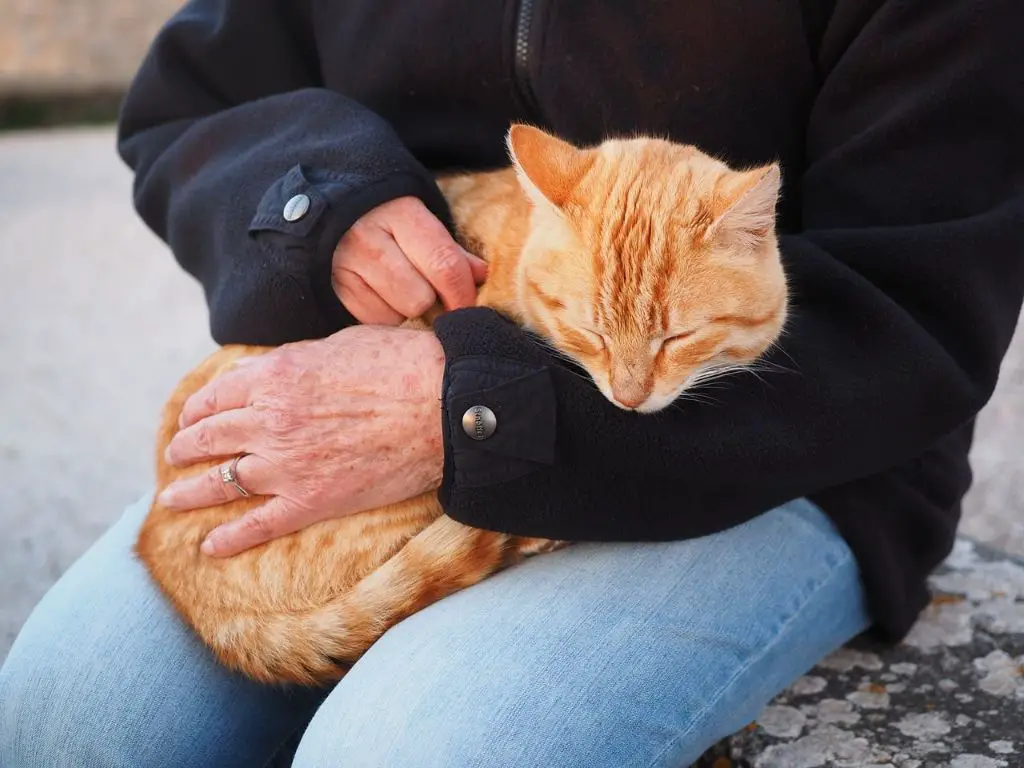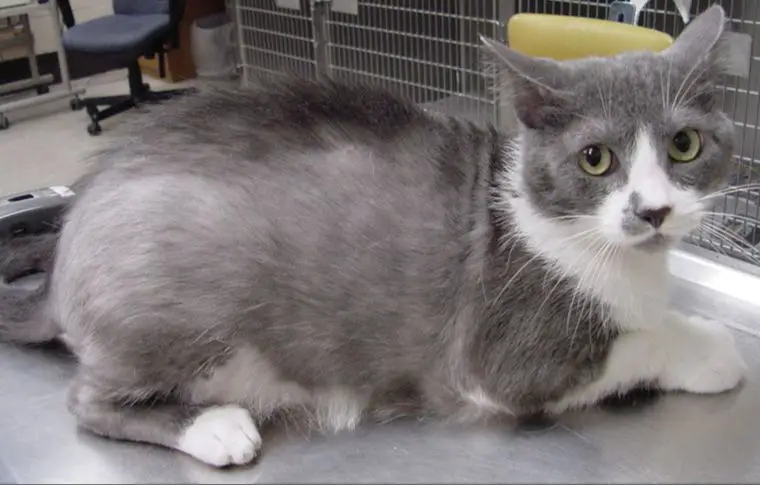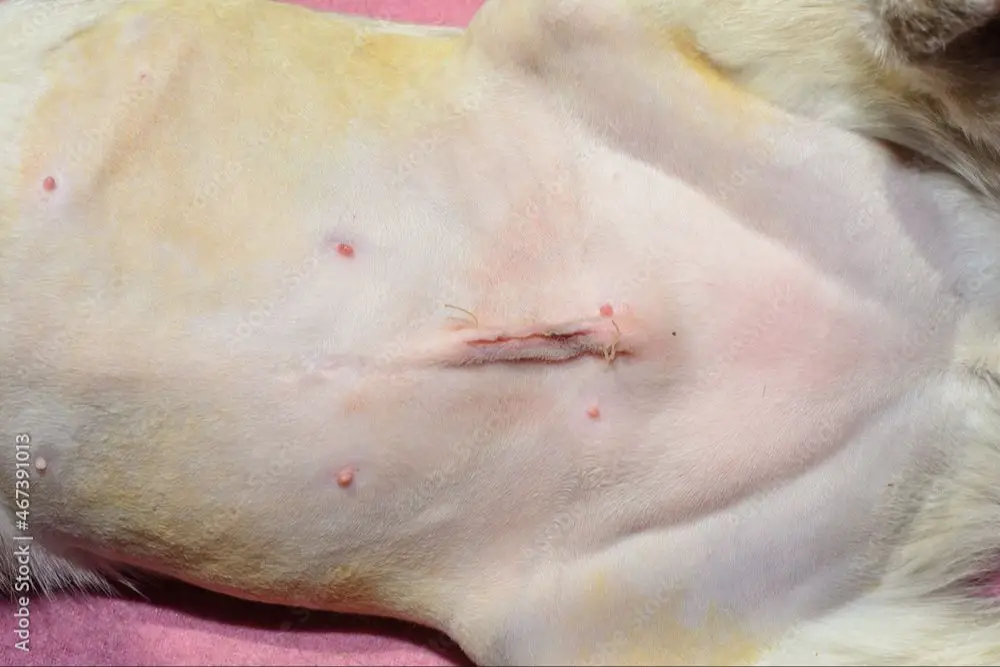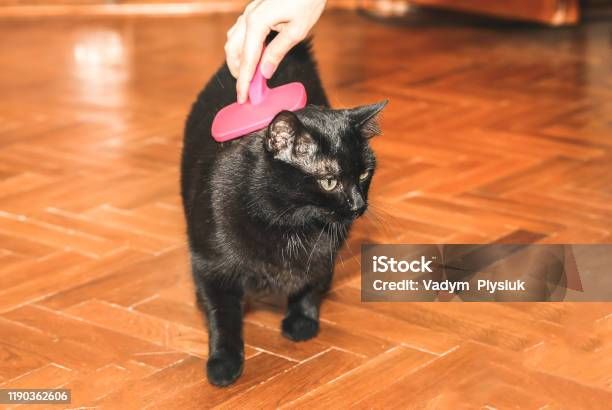Cats have two layers of hair: a short, fine undercoat and longer outer guard hairs. Both layers go through growth cycles of active growth (anagen), regression (catagen), and rest (telogen). Cat owners may wonder if fur grows back after events like shaving or normal shedding. Understanding the basics of feline coat growth cycles can explain why fur regrows after being cut or shed.
This article provides an overview of cat fur and hair regrowth. It covers topics like: does shaved fur grow back, common causes of fur loss and regrowth cycles, grooming tips for healthy fur growth, when to seek veterinary advice about fur issues, changes to fur growth in senior cats, and regrowing fur after injuries or surgery. The goal is to give cat owners a detailed understanding of cat fur cycles so they know what to expect if their cat’s coat changes.

Cat Coat Basics
There is a key difference between cat fur and cat hair. Fur refers to the entire coat that covers a cat’s body, while hair describes the individual strands within the fur (Source 1). Cat fur consists of two layers – a dense, fine undercoat and a top layer of guard hairs that are longer and thicker. The undercoat is what provides insulation, while the guard hairs protect the undercoat and repel water (Source 2).
The length and thickness of cat fur varies greatly between breeds. For example, Rex cats have very short, curly fur, while long-haired breeds like Persians have long, flowing fur and a very full undercoat. Domestic shorthairs tend to have a shorter but still dual-layered coat. No matter the length or breed, proper grooming is needed to keep the fur and undercoat healthy.
Cat Fur Growth Cycles
Cat fur goes through three distinct growth cycles: anagen, catagen, and telogen. During the anagen phase, the hair actively grows to its full length. This growth phase lasts about 2-6 weeks in cats [1]. The catagen phase is a short 2-3 day transitional period where the hair stops growing and the follicle shrinks [2]. In the telogen phase, the hair follicle is inactive and the hair falls out. This rest phase lasts 2-3 months before the cycle starts over again.
The length of the growth cycles can vary by breed. For example, Siamese cats may only have a 2 week anagen phase while Persians have a 6 week growth phase [1]. Shedding occurs when a large number of hairs are in the telogen phase. Cats will shed more in the spring and fall when daylight hours change.
Does Shaved Fur Grow Back?
Shaving a cat’s fur down to the skin removes the longer guard hairs but leaves the shorter undercoat intact (1). This can negatively impact the regrowth of the cat’s coat. Guard hairs protect the undercoat and skin from sun exposure and damage. Without this protective top layer, the cat’s skin and remaining fur are more vulnerable (2). Additionally, shaving can damage hair follicles, potentially impacting regrowth. It also exposes the cat’s skin, which can lead to sunburn or other irritation (3).
In most cases, shaved fur will grow back with time. However, the rate of regrowth depends on the cat’s original coat length and health. Typically, short-haired cats’ fur grows back within 2-3 months. Long-haired cats usually require 3-6 months for their coat to fully regrow (1, 2). The new hairs will initially have a different texture and coat pattern compared to the original fur. It takes additional regrowth cycles for the coat to return to its normal thickness and appearance (3).
Overall, while shaved fur does eventually grow back in most cases, the process can take many months. Shaving can also damage the hair follicles and remove the protective topcoat, so it should be avoided unless medically necessary.
Sources:
(1) https://www.quora.com/Do-cats-hair-grow-back-after-shaving-or-clipping

(2) https://www.cuteness.com/article/house-its-hair-back-shaved
(3) https://www.catster.com/guides/how-long-does-it-take-for-cat-hair-to-grow-back/
Fur Loss and Regrowth
There are several common causes for cats to lose their fur, which can impact how well it regrows. Some of the most frequent reasons for fur loss in cats include:
Skin allergies – Allergies to food, flea bites, or environmental factors can cause inflammation and hair loss. Treating the allergy will allow fur to regrow once the irritation subsides (https://palosanimalhospital.net/5-reasons-cat-losing-hair/).
Fleas – Flea bites and flea allergy dermatitis causes intense itching, licking, and chewing that pulls out fur. Getting rid of fleas and treating skin irritation allows fur to regrow (https://www.merckvetmanual.com/cat-owners/skin-disorders-of-cats/hair-loss-alopecia-in-cats).
Stress – Stress causes cats to overgroom, pull out fur, and damage follicles. Reducing stress enables normal fur regrowth. Provide enrichment and minimize changes to the environment.
Other issues like infections, hormonal imbalances, and autoimmune disorders can also cause fur loss. Identifying and treating the underlying condition allows the fur to regrow once the follicle is healthy again. Talk to your vet if your cat is losing fur so proper treatment can begin.
Grooming for Fur Regrowth
Regular grooming is essential for helping a cat’s fur grow back quicker after shaving or other causes of hair loss. Frequent brushing helps remove loose, dead hairs so that new hairs can grow in properly. Brushing also stimulates blood circulation in the skin, which delivers nutrients for healthy hair follicles.
Certain supplements like fish oil and vitamin E can support skin and coat health. These provide fatty acids and antioxidants to nourish the hair follicles and skin.1 Diet is another factor, as a nutritionally balanced cat food with omega-3s can reduce shedding and promote regrowth.
Regular deshedding grooming sessions, along with supplements and diet, give the cat’s follicles the best chance to regenerate a full, healthy coat. Persistence with grooming is key, as is patience for the natural regrowth process over several weeks or months.
When to See the Vet
Unusual hair loss in cats, especially if it’s abrupt or patchy, can indicate an underlying health issue. It’s important to have your veterinarian examine your cat if you notice any of the following signs:

- Sudden, excessive shedding or bald patches
- Inflamed, irritated skin or sores where fur is missing
- Redness, scabbing, or pus around affected areas
- Evidence of scratching, licking, or chewing at the skin
- Hair loss accompanied by changes in appetite or energy levels
Skin infections, parasites like mange mites, hormonal disorders, and stress can all cause abnormal feline hair loss. Your vet will perform diagnostic tests like skin scrapings and bloodwork to pinpoint the underlying cause. Treating any infections or medical conditions can help get your cat’s coat growing back to normal.
It’s especially important to schedule a veterinary visit if your cat seems to be in pain or distress from hair loss or skin irritation. Medication may help soothe discomfort while the underlying problem is addressed. Proper treatment will both restore your cat’s fur and improve their overall wellbeing.
Fur Growth in Senior Cats
As cats reach senior age, which is typically around 11-14 years old, their fur can go through some changes. Many owners notice that their older cats seem to shed more. According to PetCoach, “As with people, some older cats may start to show gray hair, especially black cats. The hair coat may become thinner and duller, however, this can also be a sign of illness” [1]. Thinning fur and increased shedding in senior cats is often simply due to aging.
There are a few reasons an older cat’s coat may change as they age:

- Slower hair follicle cycling – Older cats produce new hairs more slowly.
- Decreased grooming – Senior cats tend to groom themselves less, leading to more loose hairs in the coat.
- Changes in diet – Nutrient deficiencies can affect coat health.
- Underlying illness – Some diseases can lead to poor coat quality.
To help minimize shedding and keep your older cat’s coat healthy, be sure to brush them regularly to remove dead hairs. Check with your vet if you notice significant hair loss that exposes the skin, as that may indicate an underlying issue. Otherwise, some coat thinning and increased shedding is normal for an aging cat.
Fur Regrowth After Injury/Surgery
Cat fur often falls out or gets shaved around incision sites during veterinary procedures like spaying or tumor removal surgery. This can leave bald patches that make take time to fill back in with fur.
According to petforums.co.uk, cat fur typically takes about a month to grow back after a spay surgery [1]. However, the process may be slower after more invasive surgeries. Reddit users report it can take 2-3 months for fur to fully grow back in after major operations[2].
The initial fur regrowth may be thinner or sparser around the incision site. But given time, the fur should fill back in with the cat’s normal thickness and fullness. To encourage regrowth, keep the area clean and brush the surrounding fur gently with a soft brush. See your vet if the area stays bald or irritated long-term.
Conclusion
In summary, cat fur will generally grow back even after shaving, as long as the cat is healthy. Cats go through natural shedding and regrowth cycles, where they lose old fur and grow new fur. However, extreme shaving can damage or alter the regrowth cycle, so it’s best to trim only minimally if needed. Proper nutrition, grooming, and veterinary care are important for supporting healthy fur regrowth. If a cat is exhibiting bald spots, hair loss, or lack of regrowth, it’s critical to identify and address any underlying medical conditions. With a little patience and care, cat fur should return over time. The key is maintaining skin and coat health.
Cat fur is a unique attribute of our feline friends. Understanding the natural growth cycles and how to support regrowth allows cat owners to make the best decisions for their pets’ wellbeing. With proper care, cats can continue growing soft, lush coats across their lifespan.
